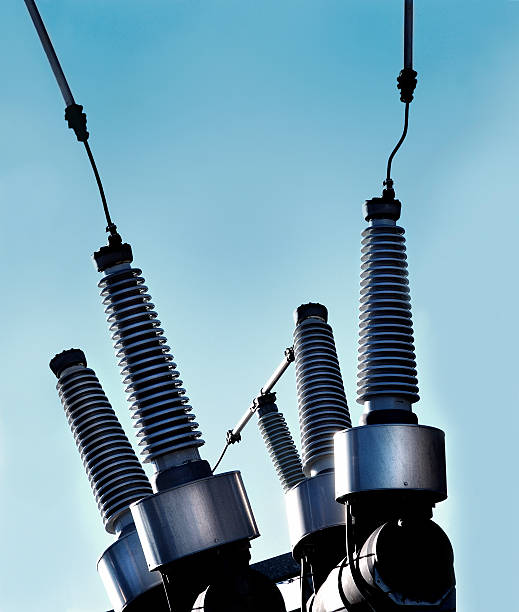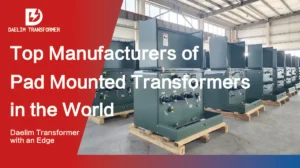
How to Choose Pad Mounted Transformer?
Table of Contents Selecting the right pad-mounted transformer requires careful consideration of several critical factors, as these ground-mounted distribution transformers play a vital role
ELECTRIC, WITH AN EDGE
The neutral point of the power system operates in a variety of ways, such as ungrounded, grounded through resistance, grounded through arc suppression coils, or directly grounded. There are three main neutral grounding methods currently used: non-grounding, grounding through the arc suppression coil, and direct grounding. The low resistance grounding system is widely used worldwide.

The value of the capacitance current relative to the ground is equal but the phase difference is 120°, the vector sum is equal to zero, no capacitance current passes through the ground, and the neutral point to the ground potential is zero, that is, the neutral point is consistent with the ground potential.
At this time, whether the neutral point is grounded or not has no effect on the phase-to-ground voltage. However, when the neutral point is not grounded, the relative ground capacitance of the system is not equal, and the neutral point’s ground potential is no longer zero in time under normal operating conditions.
This situation is usually called the neutral point displacement, that is, the neutral point. It is no longer ground potential. This phenomenon is mostly caused by the asymmetrical arrangement of overhead lines and incomplete transposition.
In a three-phase system where the neutral point is not grounded, when one phase is grounded: first, the ground voltage of the ungrounded two phases rises to √3 times, which is equal to the line voltage.
Therefore, in this system, the relative ground The insulation level should be designed according to the line voltage. Second, the magnitude and phase of the voltage between the phases remain unchanged, and the balance of the three-phase system has not been destroyed, so it can continue to operate for a period of time, which is the biggest advantage of this system.
However, long-term grounding operation is not allowed, especially the power system directly supplied by generators, because the ungrounded phase-to-ground voltage rises to the line voltage, and the long-term grounding operation time of one phase may cause a two-phase short circuit.
Therefore, insulation monitoring or grounding protection devices should generally be installed in such systems. When single-phase grounding occurs, it can send out a signal, so that the on-duty personnel can quickly take measures to eliminate the fault as soon as possible.
The allowed continuous operation time of a one-phase grounding system shall not exceed 2h at the longest.
Third, the current passing through the grounding point is capacitive, and its magnitude is three times the original capacitance current relative to the ground.
This capacitive current is not easy to extinguish and may cause arc analysis at the grounding point, periodically extinguishing, and re-occurring arcs. The continuous intermittent arc of arc grounding is more dangerous.
It may cause overvoltage at the resonance site of the line, damage electrical equipment, or develop into a phase-to-phase short circuit. Therefore, in this system, if the ground current is greater than 5A, the generator, transformer, and motor should be equipped with grounding protection devices that act on tripping.
To overcome this shortcoming, a method of grounding via an arc suppression coil has emerged. At present, in the 35kV power grid system, this method of grounding the neutral point through the arc suppression coil is widely used.
The arc suppression coil is an adjustable inductance coil with an iron core, which is installed at the neutral point of a transformer or generator.
When a single-phase grounding fault occurs, an inductive current that is approximately equal to the grounding capacitor current but in the opposite direction can be formed.
This inductive current with a lagging voltage of 90° and a capacitor current with a leading voltage of 90° compensate each other and finally flow through the ground.
The current becomes so small that it is equal to zero, thereby eliminating the arc at the ground and the hazards that may be caused by it.
The name of the arc suppression coil is also derived from this. When the capacitor current is equal to the inductor current, it is called full compensation; when the capacitor current is greater than the inductor current, it is called under-compensation;
when the capacitor current is less than the inductor current, it is called overcompensation. Generally, over-compensation is used, so that the arc suppression coil has a certain margin so that over-voltage will not occur due to resonance.
The system where the neutral point is directly grounded belongs to the larger current grounding system. Generally, the current through the grounding point is relatively large, which may burn electrical equipment. After a fault occurs, the relay protection will act immediately to trip the switch and eliminate the fault. At present, most of the systems above 110kV in our country use the neutral point to directly ground.
The neutral point grounding method of the power system with different levels is also different. Generally, the following principles are used to choose: power grids above 220kV, use the neutral point direct grounding method; 110kV grounding grids, mostly use the neutral point direct grounding method, a small part adopts the neutral point direct grounding method.
Arc suppression coil grounding method; 20~60kV power grid, starting from the reliability of power supply, adopt the method of grounding or ungrounding through the arc suppression coil.
But when the single-phase grounding current is greater than 10A, the method of grounding through the arc suppression coil can be adopted; for the 3~10kV power network, the reliability of power supply and the consequences of failure are the most important considerations, and the neutral point is not grounded.
But when the grid capacitance current is greater than 30A, grounding through arc suppression coil or resistance grounding can be used; below 1kV, that is, 220/380V three-phase four-wire low-voltage power grid, from a safety point of view, the neutral point is directly grounded.
In this way, it can prevent the dangerous (ground) voltage of more than 250V when one phase is grounded. In special places, such as explosion-hazardous places or underground mines, some neutral points are not grounded. At this time, a phase or neutral point should have a puncture fuse to prevent the danger caused by high-voltage intrusion into low-voltage.
In the 220/380V three-phase four-wire low-voltage power distribution network, the neutral point of the distribution transformer is mostly grounded.
This is mainly because it has the following advantages: First, it can maintain the phase line’s ground voltage unchanged under normal power supply conditions, so that it can provide two different voltages (220/380V) to the outside (to the load) to meet Single-phase 220V (such as electric lights, electric heating) and three-phase 380V (such as electric motors) have different power requirements.
Second, if the neutral point is not grounded, when a single-phase grounding occurs, the ground voltage of the other two phases will increase to several times the phase voltage.
After the neutral point is grounded, the ground voltage of the other two phases is still the phase voltage. In this way, the contact voltage of the human body can be reduced, and at the same time, the insulation requirements for electrical equipment can be appropriately reduced, which is beneficial to manufacturing and reducing costs.
The third is to avoid the danger of high-voltage power escaping to the low-voltage side. After the above grounding is implemented, if the insulation between the high and low voltage coils is damaged and serious leakage or even a short circuit is caused, the high voltage can form a closed loop through the grounding device, so that the upper level of protection will trip and cut off the power supply, thereby avoiding the low voltage side Workers are injured by high-voltage electricity or cause equipment damage.
Therefore, the neutral point of the low-voltage power grid is generally directly grounded.
The neutral point is divided into power neutral point and loads neutral point. It only appears when the three-phase power supply or load is connected in Y-shape. For the power supply, the common connection point where the head or tail of the three-phase coil is connected is called the neutral point of the power supply, referred to as the midpoint; and the wire drawn from the neutral point of the power supply is called the neutral line, referred to as the neutral line. ,
Commonly used N said. Three-phase four-wire neutral point ungrounded system and three-phase four-wire neutral point grounded system. In general, when the neutral point is grounded, it is called the neutral line; if it is not grounded, it is called the neutral line.
The three points of the power distribution system are grounded together. To prevent the power grid from being harmed by overvoltage, the neutral point of the transformer, the housing of the transformer, and the ground down conductor of the arrester are usually connected to a grounding device, which is also called three-point common grounding. This can guarantee the safe operation of the transformer. When it is struck by lightning, the arrester will act, leaving only the residual voltage of the arrester on the transformer shell, reducing the part of the voltage on the grounding body.

Table of Contents Selecting the right pad-mounted transformer requires careful consideration of several critical factors, as these ground-mounted distribution transformers play a vital role

The primary function of the pad mounted transformer is to serve as a critical distribution transformer that steps down higher primary voltage from utility distribution

A pad mounted transformer operates through electromagnetic induction, serving as a crucial distribution component that converts high voltage electricity to lower, usable voltages for residential

When looking for the best pad-mounted transformer manufacturer, it’s important to find industry leaders known for reliability and innovative solutions. Pad-mounted transformers are essential in
After filling in the contact information, you can download the PDF.